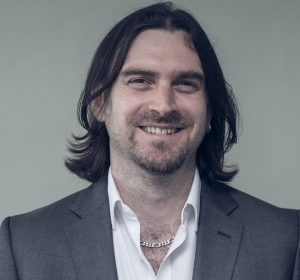DTG’s Peter Sellar and Alex Buchan reflect on broadcast audio present and future

Alex Buchan, Head of Wireless Technologies, DTG
In a new interview with SVG Europe, DTG (Digital TV Group) director of broadcast technology Peter Sellar and head of wireless technologies Alex Buchan consider the DTG’s current activities in broadcast audio, and consider some of the trends – notably immersive audio and IP – now shaping the workflows of tomorrow.
Established in 1994 with the purpose of looking after the digital TV marketplace, the DTG is the self-funding UK collaboration centre for innovation in digital media technology. It underpins free-to-air platforms Freeview, Freesat and YouView, and continues to support the development of pay TV and other platforms. Its present areas of interest include the convergence of content and networks to focus on the efficient delivery of video to all screens in all formats. But as Sellar and Buchan observe, the evolving possibilities of Next Generation Audio and IP-based workflows mean that audio is also an integral element of the DTG’s labours…
Which specific areas of audio technology is the DTG working on at present?
SELLAR: We have a DTT Platform Steering Group that publishes the D Book – which defines the requirements for every new TV and digital terrestrial receiver in the UK – on an annual basis. Within that group we have been holding discussions about what the next steps might be around Next Generation Audio (NGA), primarily because UHD is becoming of a reality. And UHD is not just about pixels – it is about the whole experience, and audio is a fundamental part of that.
As a result of these discussions we have decided that under the UK UHD Forum – which is another steering group – we are going to undertake some study work into what is happening internationally in terms of NGA, what technologies and implementations are being used, and the standards involved. An example of the latter would include UHD Book 1.0, which has just been published [in October 2017] and has support for NGA.
How do you expect the market for NGA to develop?
SELLAR: It’s clear there are a number of technologies in the space – AC-4 with Dolby, MPEG, DTS:X, etc – and it’s a case of waiting to see which ones the content providers decide to use. It is [relatively early days], and while there are standards out there and they are being implemented, I do think we will see quite a bit more development in this area. It will be useful to observe the user cases as they emerge.

Peter Sellar, Associate Director, Broadcast, DTG
One point I would emphasise is that NGA is not just about an immersive user experience – it’s also about personalisation and accessibility, and there are definitely some opportunities there. It remains to be seen how consumers will [interact with them] and how they will be implemented by broadcasters.
[Above all our priority at the DTG] will be to ensure that legacy products are not affected and that consumers with the new products will be able to make the most of these technologies. Where there are different technologies and varying levels of implementation happening, it’s vital to pull together and make information available so that people can make informed choices.
IP-based workflows continue to grow in popularity – what work is the DTG doing in this area?
SELLAR: We have done some updates around the implementation of HbbTV and DVB-DASH in terms of streaming services. We find that what happens in the IP world has been happening more quickly in broadcast, to some extent.
[It is evidently a major area of development] for broadcasters with bandwidth issues to be dealt with and the [emerging] need to be able to deliver NGA streams as well as standard stereo. But there is no doubt that IP services are continuing to take off.
What can you tell us about your current activities around spectrum allocation and supporting the PMSE (Programme Making and Special Events) community?
BUCHAN: In 2016 we started a working group to help PMSE move out of 700 MHz and are now about to a project that will help coordinate activities with regard to a phased approach that allows [PMSE users] to maintain their services but with less spectrum. The working group involves users and manufacturers, and revolves around knowledge sharing; representatives of [UK comms regulator] Ofcom attend too, and DCMS is also represented sometimes. Essentially it is about finding ways to do more with less [spectrum].
How significant was the recent decision by Ofcom to allow PMSE users to have continued access to the so-called guard band – which is 694-703 MHz – beyond May 2020?
BUCHAN: I think the general consensus is that any PMSE spectrum access is to be welcomed in principle, altogether whether the particular bit of spectrum can be useful is another thing. The quality of the spectrum may be affected by the fact that there will be 4G handsets operating in close proximity in terms of frequency. As a result it is going to be difficult to factor guard-band usage into PMSE spectrum planning [spectrum usage] at events.
As well as the guard band, there will be some new spectrum for PMSE up in 960-1164 MHz, but at the moment there isn’t any equipment in that band. The BBC and some other PMSE users have undertaken tests there and it appears that it will be quite good spectrum to share and use with incumbent users. But it is really a UK specific solution at present, so one of the [challenges] is that it [would not constitute a sizeable enough market] for manufacturers to provide for. So one of the things we are looking at is whether a national channel can be created within that band, rather like what happened with channel 38, to help incentive companies to begin producing equipment for that band.
Meanwhile we are also looking at digital [wireless] equipment and ways in which it can be improved with regard to latency, physical size, battery life and cost. I see a lot of exciting developments taking place there.

